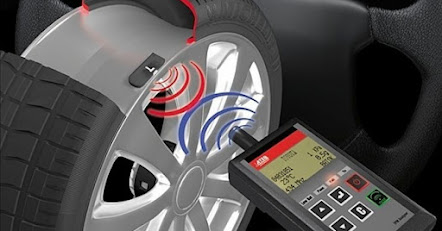Understand in Detail About Your TPMS replacement
TPMS sensor substitution is a novel and occasionally vexing truth of car proprietorship in the present day. It is splendid that your auto knows the amount of air in your tyres, and TPMS has forestalled some lives. In any case, installing delicate electronic equipment in a scorching elastic tube that spends its whole functional life turning at high speeds and bashing into things has prompted some toughness issues. Thus, when do you have to plan your TPMS Replacement Harrow?
What is a TPMS?
The objective of the tyre pressure monitoring system (TPMS) in your vehicle is to caution you that one or more tyres are considerably under-inflated, potentially leading to an unsafe driving situation. The TPMS low tyre pressure warning sign is a yellow icon that appears on the dashboard instrument panel like a tyre cross-section (in the form of a horseshoe) with a cautionary sign.That signal indicator in your vehicle has a historical past. Its tale can be traced back to years of perplexity regarding the right tyre pressure and countless incidences of serious car crashes that could have been prevented had drivers realized their air pressure was inadequate. It's thought that a vast amount of cars are driven every day with underinflated tyres. Fortunately, correct tyre upkeep with the aid of a TPMS does greatly reduce the risk of serious mishaps. Before this signal lamp became standard equipment, determining if your air pressure had verged on hazardous levels necessitated you getting out of your car, stooping down, and using a tyre gauge. With minor exceptions, this was the solitary pressure-measuring apparatus that the average person had in their possession.
In response to an increase in incidents resulting from tyres that were inadequately inflated, the US government instituted the Transportation Recall Enhancement, Accountability, and Documentation (TREAD) Act. Consequently, the majority of vehicles distributed in the United States since 2007 have some sort of tyre pressure monitoring system.
Indications that your TPMS needs to be replaced
Expired batteries
The TPMS sensor needs the vehicle's battery to operate effectively. Typically, batteries last about five years, but this varies depending on how often you use your car. Apart from this, the weather and road conditions can influence their lifespan. Additionally, if you do a considerable amount of stop-and-go driving, your battery will use more juice than it would if you were just cruising along.Wrong alerts
TPMS sensors can give unreliable readings if they are not operating properly. It is frequent for the automobile’s system to sound an alert on the dashboard even in the absence of a punctured tyre.Having access to this data can be very advantageous when it comes to spotting a flat tyre. Nevertheless, constant warnings about a spoiled tyre may indicate an issue that needs to be addressed. It is very important to check the tyres yourself and guarantee all of them have the correct air pressure. Ignoring a bad indicator could be costly, as it is essential to find out when you have a flat tyre.



Comments
Post a Comment